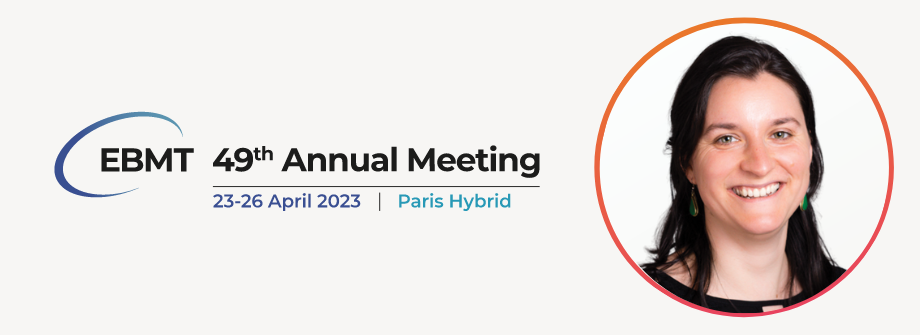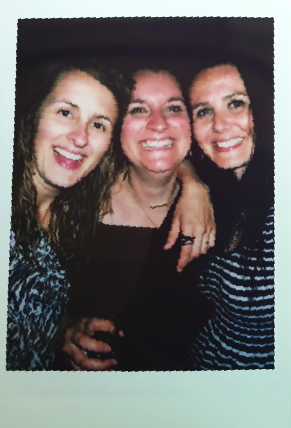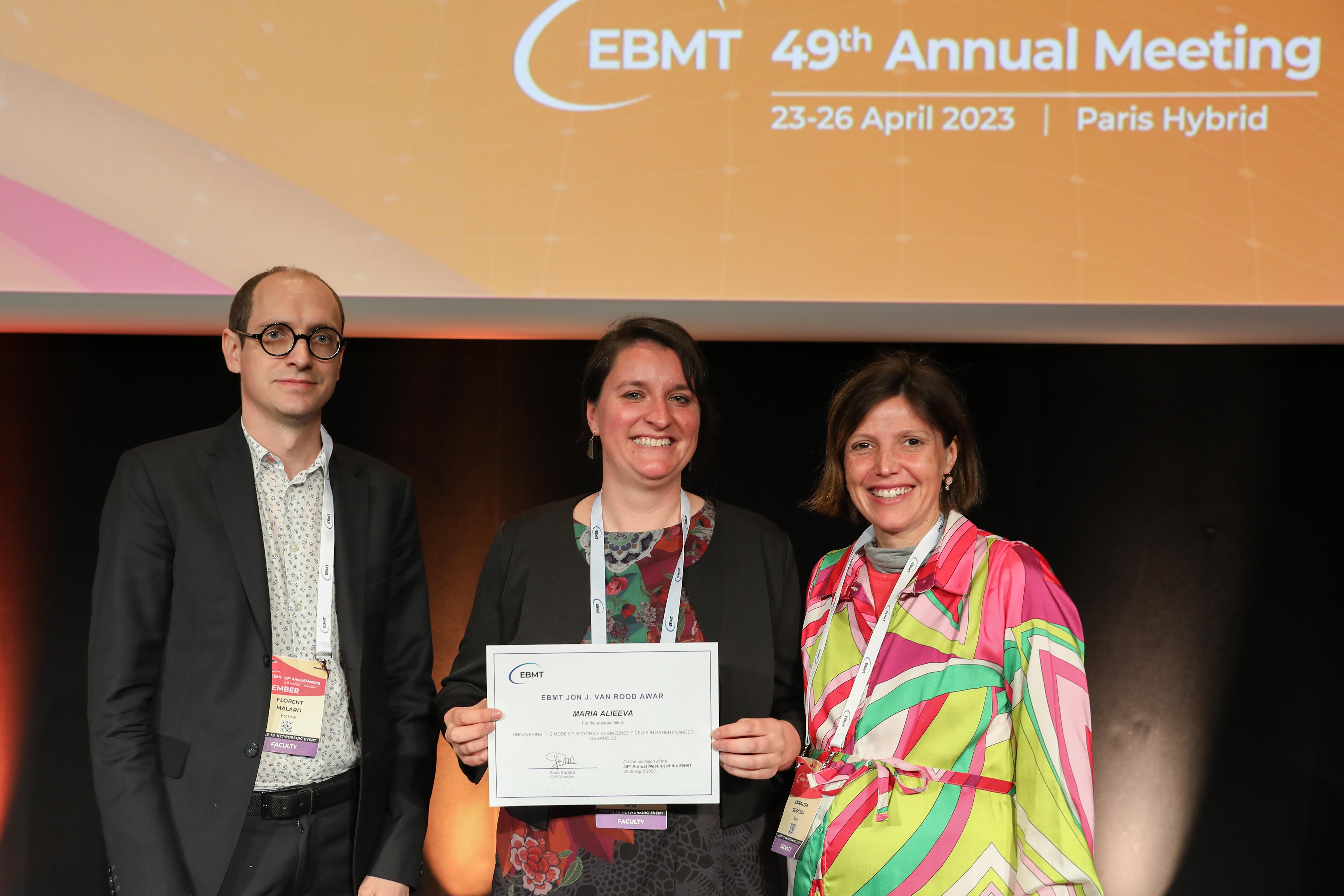
Time and date of presentation: 11:50-12:15, Tuesday 25 April in Amphitheatre Bleu.
Maria and her team have won this year’s Jon J. van Rood Award, awarded each year by EBMT’s Cellular Therapy & Immunobiology Working Party. The winning study is: ‘Uncovering the mode of action of engineered T cells in patient cancer organoids’
The link to the full paper is here
Here we find out more about Maria.
Q: Please tell us a little about yourself and how you got into haematology?
A: I am 36 years old and I am a tenure track Junior PI at the Biomedical Research Center “Alberto Sols” in Madrid. During my early career steps, I was trained as an imaging specialist, developing and applying non-invasive and single cell resolution technologies to monitor tumour and therapeutic cell behavior in living animals. I received my doctoral degree from the University of Barcelona in 2012 in Biomedicine.
In 2013, I joined the group of Prof. Jacco van Rheenen (Hubrecht Institute, The Netherlands) where I concentrated on studying the impact of invasive surgical procedures on malignant progression of brain cancer, through intravital microscopy. Realising that the field of imaging research was often hampered by the lack of tools to extract meaningful information from the data, I started to specialise in the development of new computational methods for the analysis of complex imaging data.
In 2017, I joined the group of Dr Anne Rios at the Prinses Maxima Center in the Netherlands, where I focused on the development of computational techniques to study cellular behaviour and perform large-scale tissue phenotyping in order to understand and improve the functionality of cell therapies against cancer. One of the highlights of my recent research was the development of a novel methodological approach that integrates single cell sequencing and single cell spatio-temporal imaging, that we applied to understand and improve the mode of action of T cell immunotherapy against cancer. This research led to the publication of our work in the journal Nature Biotechnology, that was awarded by the Jon van Rood award.
Q: Why did you decide to do this study?
A: T-cell therapies, such as CAR-T cells, are a promising type of immunotherapy that are already showing results in treating children with leukemia. T-cells, a type of white blood cell, which have been modified in the lab are administered and subsequently attack the tumour in a targeted manner. Effective T-cell therapies are also being sought for solid tumours, such as neuroblastoma, sarcoma and kidney tumours. However, to improve their clinical efficacy, we need to better understand the solid tumour-targeting behaviour of T-cells. To be able to stir T-cell therapies towards their most effective behaviours, we need to know the underlying mechanisms that dictate this behaviour. That’s why we in the lab of Dr. Anne Rios, specialized in 3D imaging at the Princess Máxima Center and Oncode investigator, teamed up with dr. Zsolt Sebestyén and Prof. dr. Jürgen Kuball, T-cell therapy experts and group leaders at UMC Utrecht, and the group of Prof. dr. Hans Clevers, organoid specialist and visiting researcher at the Máxima and the Hubrecht Institute. The two first authors of the study, Dr. Florijn Dekkers and myself also made use of our complementary expertise to achieve this interdisciplinary work, organoids and 3D imaging on the part of Dr Florijn Dekkers and imaging data analysis on my part.
Q: What were the main findings?
A: Here we utilised advanced multispectral 3D microscopy, multi-omics and artificial intelligence methods, to establish an imaging and computational platform for the analysis of 3D dynamic imaging of T cell cancer immunotherapy targeting patient-derived tumour organoids: BEHAV3D. Two of the most relevant findings of our paper are the (1) identification of a gene signature of potent T cell killer cells that was validated in human patients, and the (2) identification of IFN type I signaling in T cells induced by tumours that were sensitive to treatment, that could be modulated and improve efficiency of treatment.
Q: What are the implications for the findings, and will you be following up the study?
A: The clinical potential of this platform is supported by the identification of combination treatment strategies to improve the efficacy of T-cell immunotherapy. And the study has raised interest from both academic and industrial partners, giving rise to numerous collaborations. Moreover, several new projects from the Rios group and my own independent research are based on discoveries that we made with BEHAV3D.
Q: What other projects are you involved in?
A: Other projects outside of the immunotherapy field that my research is dedicated is to uncover microenvironmental drivers of tumour cell invasion by the use of advances computational methods tailored to imaging data as well as more fundamental computational research focused on increasing multiplexing capacity of imaging (thus the number of markers that can be visualised simultaneously) with deep learning methods.
Q: Tell us what you like to do outside of work.
A: I am a mother of two, so my time outside work is more defined by what my children like to do and then by my own likes! But if I would have time, I like to go to the theatre (I used to perform in theatre myself), I like to hike in the mountains, getting together with friends. I used to paint and play the piano, and hope to resume these activities once my children are a bit more grown up.
Thank you Maria and congratulations on your award. Enjoy EBMT 2023!

